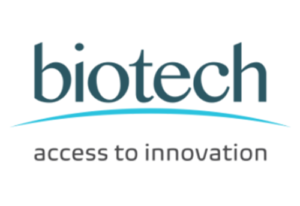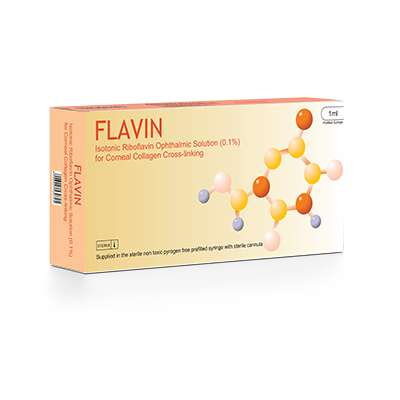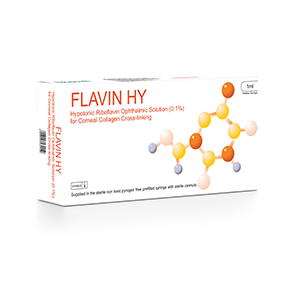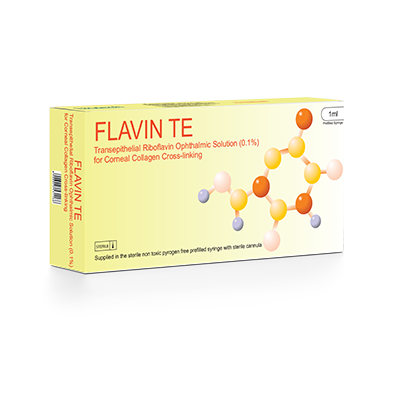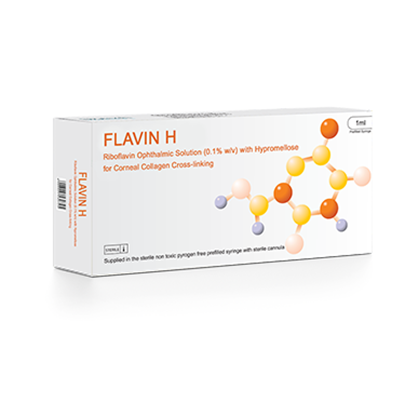riboflavin
Quick Links
No products found in this company category.
What is Riboflavin?
Riboflavin, also known as vitamin B2, is an essential nutrient that supports various bodily functions, including energy metabolism and reduction of homocysteine levels. It is naturally present in a range of foods such as dairy products and lean meats. Riboflavin plays a vital role in eye health, particularly in corneal collagen cross-linking treatments, which involve using riboflavin ophthalmic solutions combined with ultraviolet (UV) light to strengthen the cornea and improve its structural integrity. Additionally, riboflavin's potential benefits in managing conditions such as keratoconus and reducing the frequency and severity of migraine headaches have been investigated. In addition to its role in maintaining general health, riboflavin has specific applications in eye care, particularly in treating corneal disorders through riboflavin ophthalmic treatments. Understanding the importance of riboflavin and its applications in ophthalmology and general health can offer insights into effective and safe treatment options.
Riboflavin, also known as vitamin B2, is naturally present in various foods such as dairy products and lean meats. It plays a crucial role in reducing levels of homocysteine and supporting energy metabolism. Recommended dietary allowances (RDAs) vary by age and sex, with recommended intakes of 1.3 mg per day for adult males and 1.1 mg per day for adult females. Pregnant and lactating women have higher recommended amounts of 1.4 mg and 1.6 mg, respectively. Clinical trials have investigated riboflavin’s potential to reduce migraine headaches, with doses of 400 mg per day showing some benefit, according to the American Academy of Neurology and the American Headache Society. Riboflavin transport is important for its absorption and utilization in the body. While riboflavin has limited side effects, the tolerable upper intake level (UL) has not been established due to the lack of adverse effects from high intakes. Nonetheless, caution is advised when consuming excessive amounts of riboflavin.
What is Riboflavin Ophthalmic?
Riboflavin ophthalmic is a form of riboflavin used in eye treatments, specifically in the corneal cross-linking procedure. This treatment is designed to strengthen the cornea, which is the clear, dome-shaped front of the eye, by increasing its stiffness and resistance to deformation. Riboflavin ophthalmic solutions are sterile, preservative-free formulations used in corneal collagen cross-linking procedures. In corneal collagen cross-linking procedures, riboflavin ophthalmic solutions are combined with ultraviolet (UV) light. Corneal cross-linking is particularly beneficial for treating patients with keratoconus and corneal ectasia in various corneal conditions. Riboflavin eye drops are applied to the cornea, allowing the vitamin to penetrate the tissue. When UV light activates the riboflavin, it stimulates the formation of new collagen cross-links within the corneal tissue, strengthening the cornea and increasing its resistance to deformation.
What is the Function of Riboflavin in Eye Treatment?
Riboflavin plays an essential role in eye treatment, particularly in corneal collagen cross-linking procedures for conditions such as keratoconus and corneal ectasia. In these treatments, riboflavin ophthalmic solutions act as photosensitizing agents when combined with ultraviolet (UV) light to stimulate the formation of new collagen cross-links. These cross-links increase the structural integrity and strength of the cornea, stabilizing its shape and reducing irregularities. As a result, the cornea becomes more resistant to deformation, which can help prevent the progression of corneal conditions and enhance visual acuity. By increasing the cornea's durability, riboflavin therapy can slow down the progression of certain eye conditions and promote better overall eye health.
When Is Riboflavin Ophthalmic Used?
Riboflavin ophthalmic solutions are primarily used to treat keratoconus and other corneal conditions that cause corneal thinning, weakening, or changes in shape. Such conditions can lead to vision problems, including blurry or distorted vision, and may progress to more severe complications if left untreated. By strengthening the cornea and stabilizing its structure, riboflavin ophthalmic treatment can help prevent further damage and vision loss, providing an effective treatment option for individuals with these conditions.
What are The Advantages of Riboflavin Ophthalmic?
Corneal Strengthening: By stimulating the formation of new collagen cross-links in the corneal tissue, riboflavin ophthalmic solutions increase the structural integrity and strength of the cornea. This reinforcement contributes to preserving the shape of the cornea and improving its resistance to deformation.
Stabilization of Progression: Riboflavin treatments have the ability to stabilize the advancement of corneal conditions, which can slow down or even stop the further deterioration of the cornea. This can be beneficial in preventing the worsening of conditions such as keratoconus and avoiding any potential complications.
Improved Visual Acuity: Strengthening and stabilizing the cornea can lead to improved visual acuity and clarity by reducing corneal irregularities that cause distorted vision. This enhancement in vision acuity can significantly enhance the quality of life for patients.
Minimal Side Effects: Riboflavin ophthalmic treatment is generally safe, with minimal side effects and a tolerable upper intake level when used appropriately. The treatment can effectively halt the progression of corneal conditions without significant complications.
Non-invasive procedure: Corneal cross-linking is a minimally invasive treatment that involves applying eye drops and UV light, without the need for surgery.
Long-term stability: By strengthening the cornea, riboflavin ophthalmic provides long-lasting stability, reducing the risk of future complications.
Effective early intervention: Early treatment can prevent the progression of corneal conditions, preserving vision and quality of life.
Improved quality of life: Stabilizing the cornea and preventing further deterioration can lead to improved vision and overall quality of life.
How is Riboflavin Ophthalmic Used?
Riboflavin ophthalmic solutions are applied directly to the cornea in eye treatments, particularly in corneal collagen cross-linking procedures. These solutions act as photosensitizing agents when combined with ultraviolet (UV) light, allowing the riboflavin to penetrate the corneal tissue. After being activated, riboflavin starts a reaction that helps create new collagen cross-links in the cornea. This strengthens the cornea and makes it more resistant to changes in shape. The treatment usually requires multiple applications of riboflavin and exposure to UV light, allowing the cornea to absorb the solution properly and produce the desired results. By enhancing the structure of the cornea, using riboflavin in ophthalmology can help maintain its shape, potentially enhancing vision and delaying the advancement of conditions like keratoconus.
Categories
Company
Media
Follow Us
© Copyright Biotech /Terms Of Use - Privacy Policy
Version 2_CT_1212222
